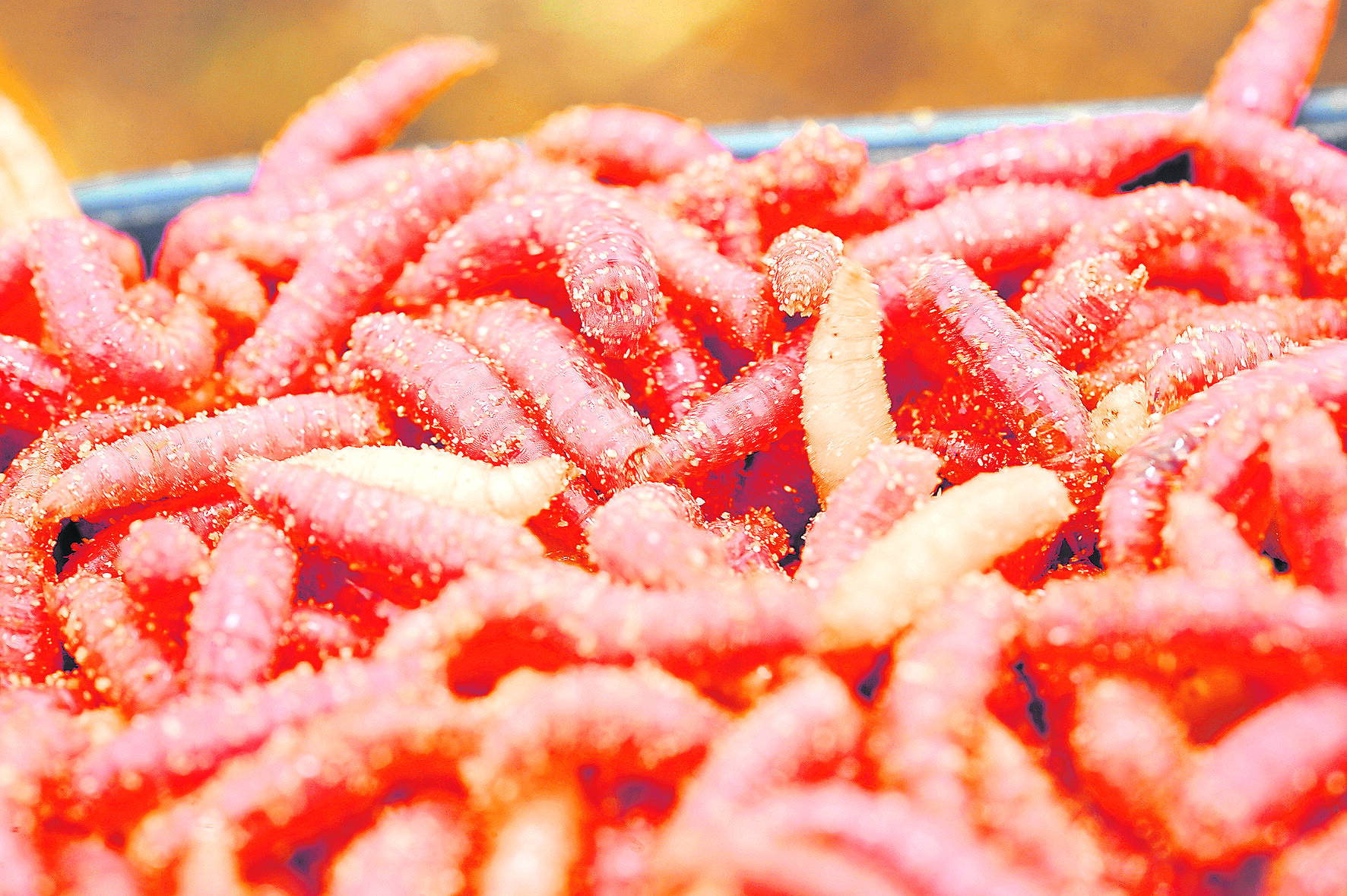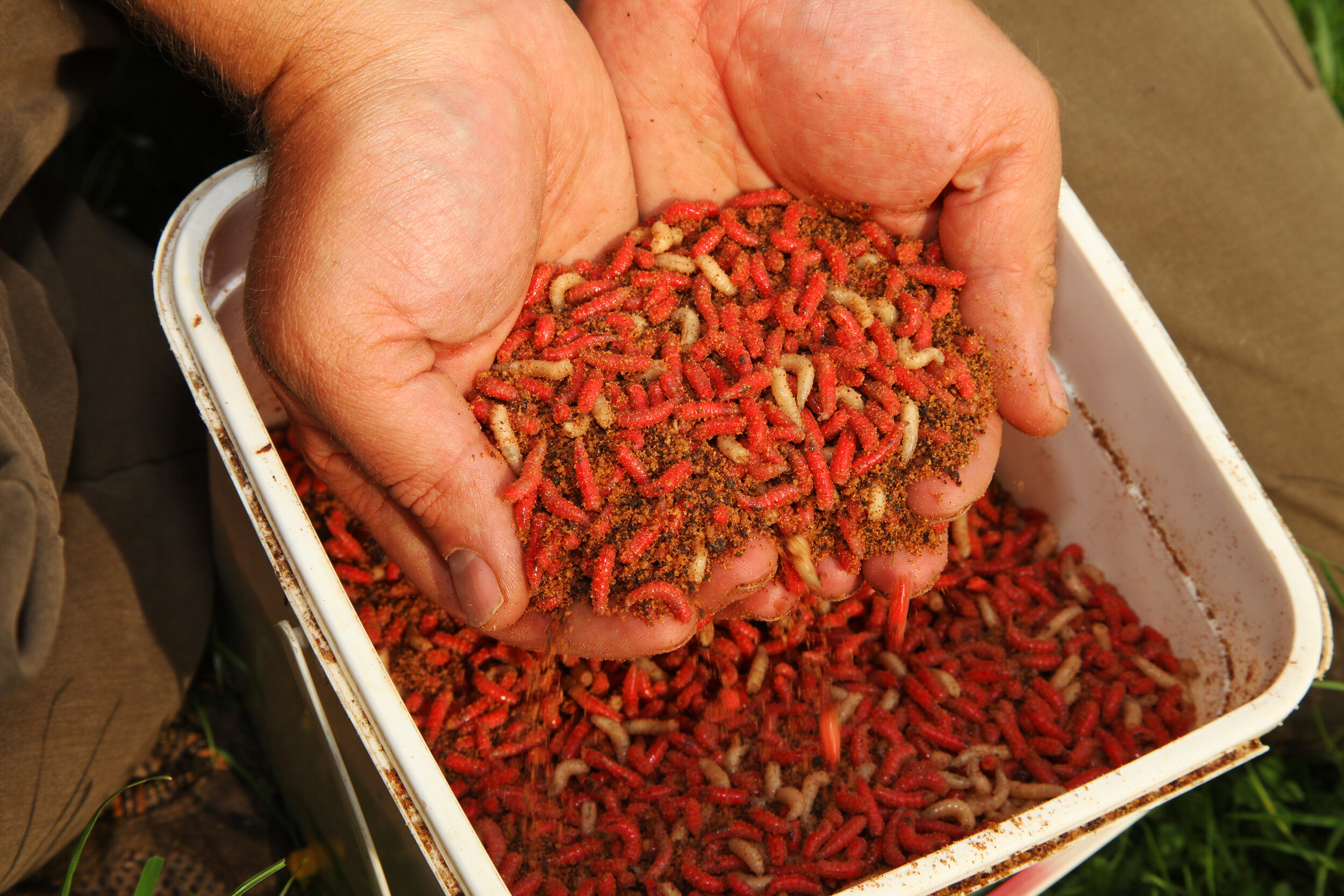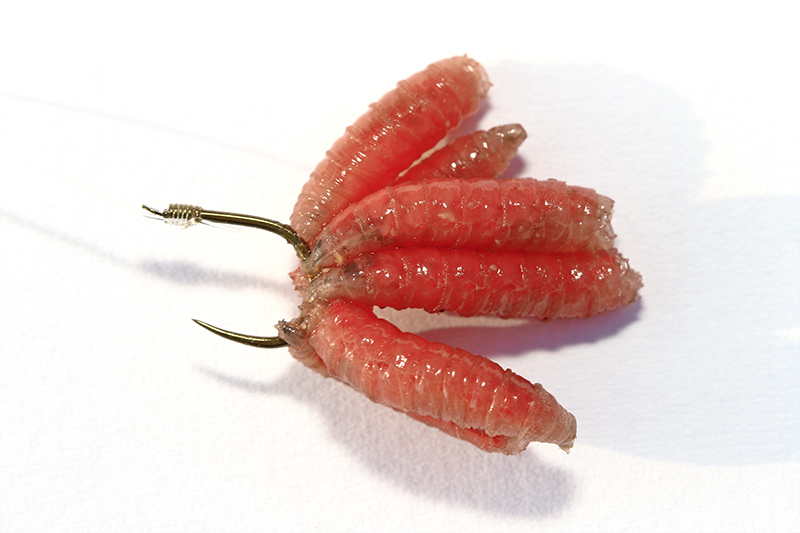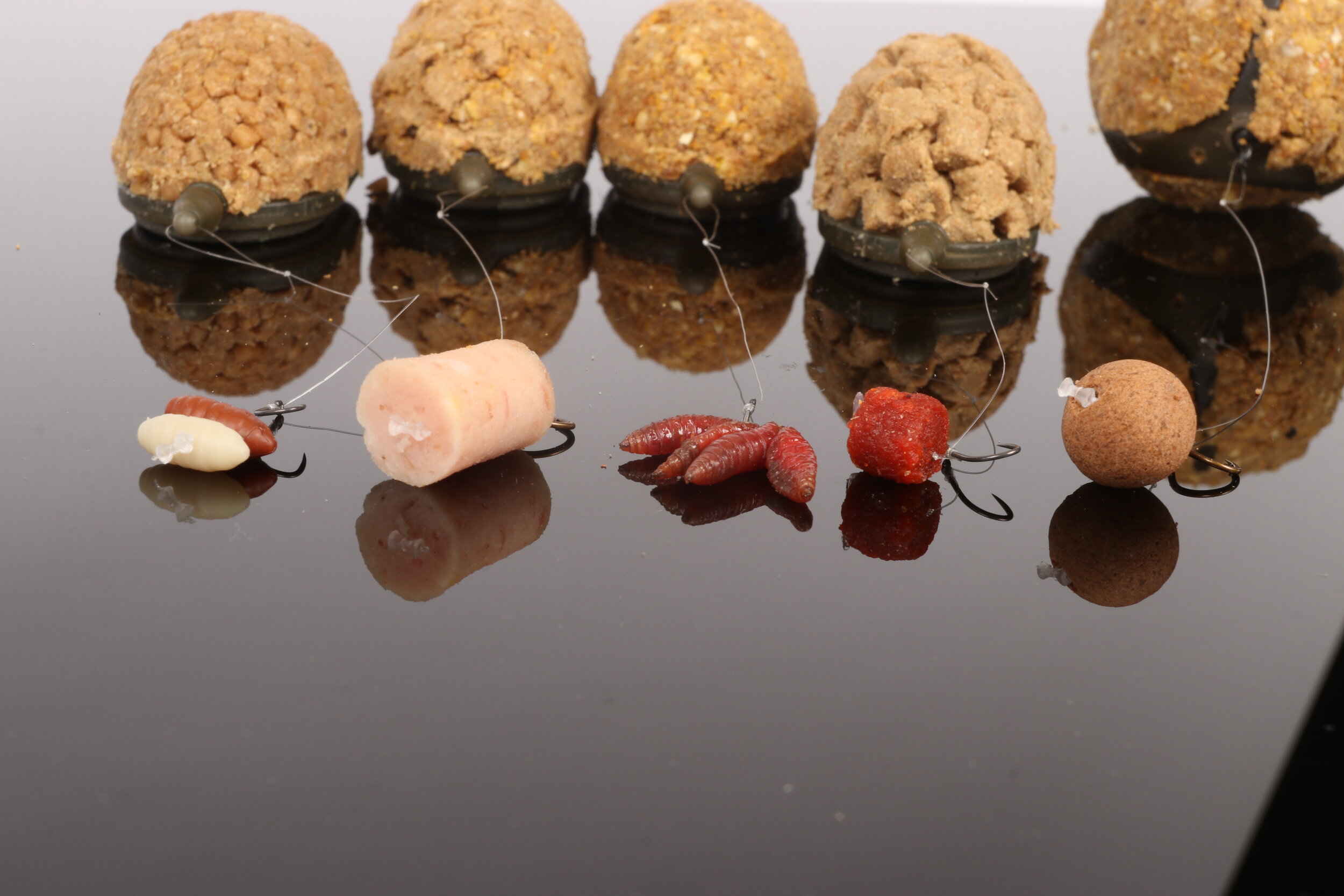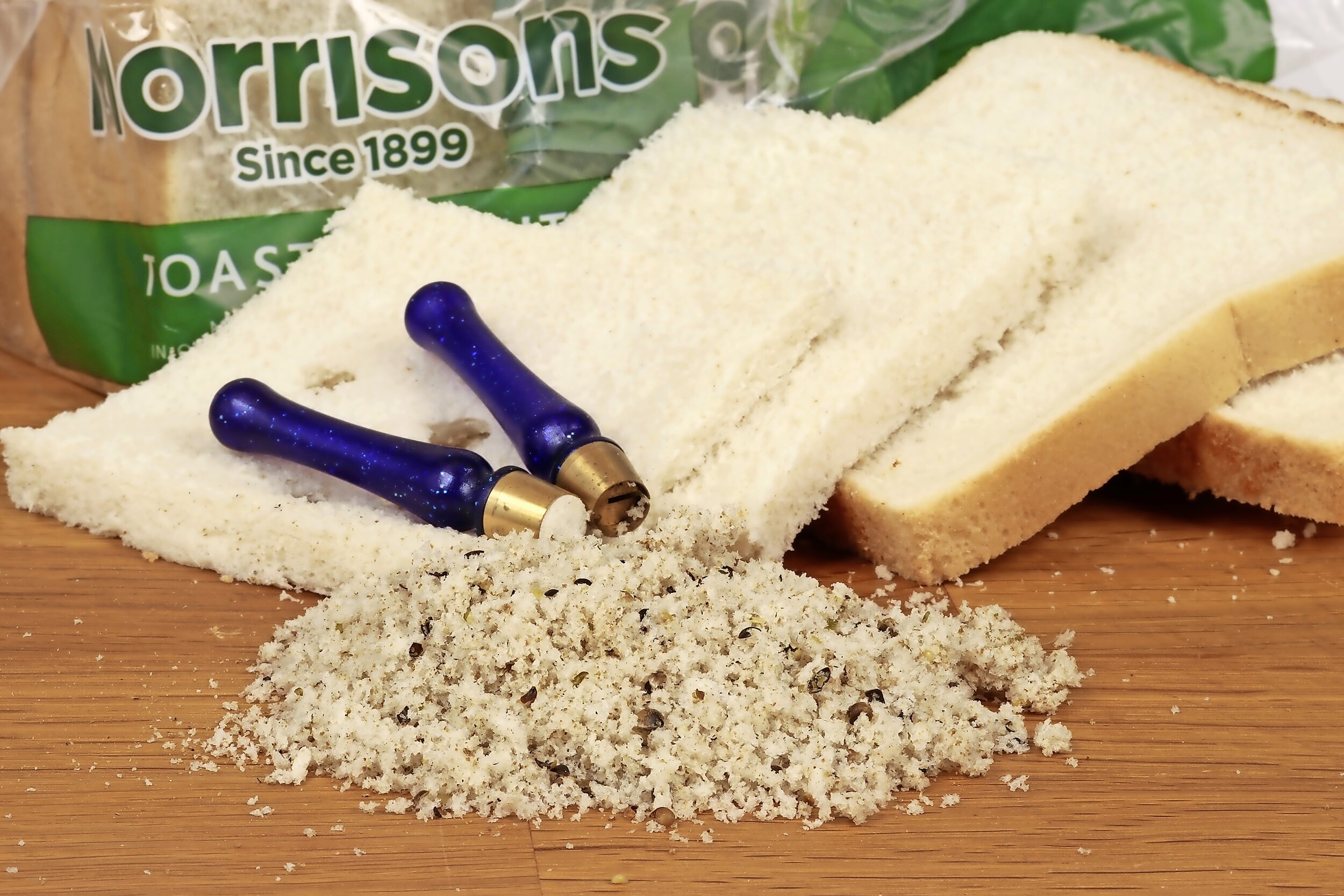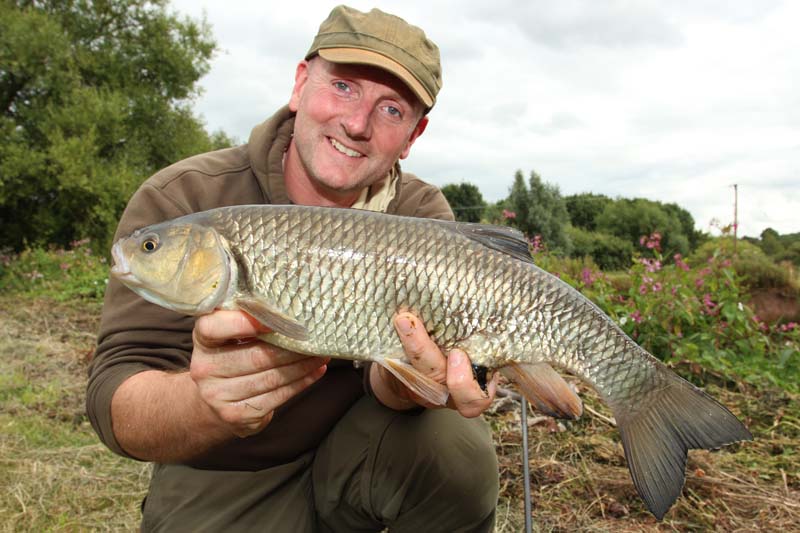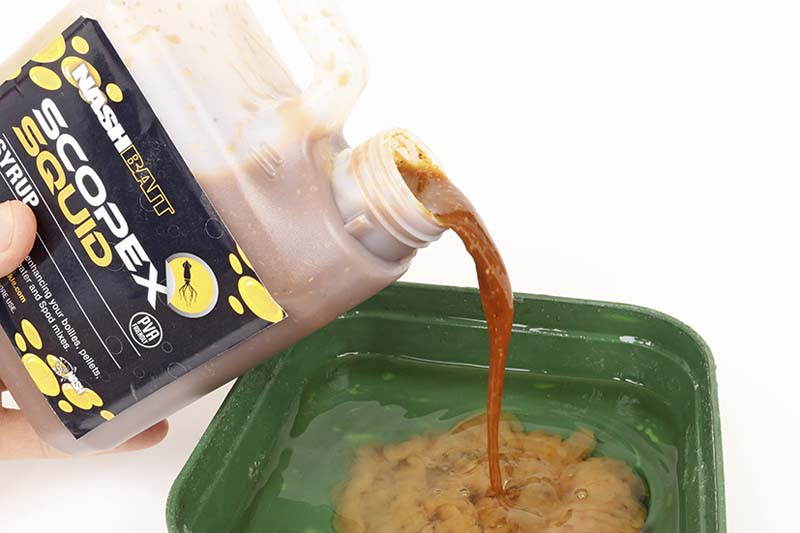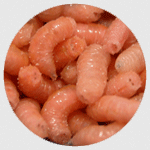What's the best all-round maggot colour? - Bob Nudd
I’d take the colour of the water into account because when there’s a brown tinge to the water, bronze maggots work really well for roach, dace and chub especially on waggler or stick float tactics.
My favourite all-round colour is the red maggot, and that’s because I think that they look like a bloodworm, which is the natural diet of many fish.
It’s also worth using a fluorescent pink maggot as a change bait, as again, the colour really stands out.
For more of your angling questions answered, turn to our ‘Ask The Experts’ section of the magazine each Tuesday.
Steve Ringer's top 10 baits to use when fishing commercials.
Are you looking for for an edge when it comes to being on a commercial fishery? Then follow match ace Steve Ringer's top 10 baits that he uses when fishing for carp on a commercial as these tips will give you the advantage that you need.
1) Margins – big baits means more bites
When fishing in the edge, one of the hardest things is getting a carp to pick up your hookbait, especially when a lot of them are feeding. I would go as far as to say there is nothing more frustrating than being able to see carp in the edge and then not be able to catch them. This is where a big ‘target bait’ such as 10-12 dead red maggots really comes into its own.
If you think about it there are going to be lots of maggots on the bottom so if I fish just two or three on the hook it’s going to take a while for a carp to find them. Fish a bunch, however, and bites can be instant! That’s how much of a difference it can make.
2) Blow up your pellets
A few years back I was doing a lot of straight lead and pellet fishing but always felt I was missing an edge over other anglers who were fishing the same tactic. Then one day when I was packing up I noticed a few pellets had fallen under my seatbox. What struck me was the size of the pellets – they had taken on water and were almost twice the size.
This got me thinking as the same thing had to be happening in the water once the pellets had been on the bottom a while. I therefore decided to pump some hard 8mm pellets and leave them in water so that they ‘blew up’ into massive, soft pellets.
Once I got the process of prepping the pellets rightthe results were staggering and I was getting more bites than ever before on my ‘new’ blown pellets! I had found the edge I had been looking for and ever since that day when lead and pellet fishing I always have a few ‘blown’ pellets with me.
3) Hard pellets - noise is the key
When the fishing is hard and there isn’t a lot happening I am big believer in trying to draw a few fish into the swim and the best way to do so is to make a noise with hard pellets. I pick up my catapult and ping just 3-4 pellets on top of the float every 20 seconds.
The reason this works is that carp home in on the noise of the pellets hitting the water but at the same time I’m not putting lots of bait on the bottom and risking killing the swim. Size-wise this tactic works best with either 6mm or 8mm pellets because anything smaller doesn’t make enough noise to help pull a fish or two into the swim.
4) Coloured water equals red meat
I love fishing meat but it loses its effectiveness when the water is extremely coloured. When this is the case I will take a handful of my 6mm cubes and dye them red. The reason being when the water is very coloured red offers a strong silhouette and gives the carp a bait they can really home in on.
I was always sceptical about red meat in the past but I’ve had good results using it too many times in coloured water conditions for it to be coincidence. I use Ringers Red Liquid to dye my cubes and will only dye my hookbait meat and not the cubes used for feeding.
5) Foul-hooking? Hemp is the answer
I’m often asked how to prevent foul-hooking carp when fishing meat close in?
My answer is to use hemp. But, and it’s a big but, it has to be used in the right way. If you feed it little and often along with the meat then there is a danger the carp can get preoccupied on it and you won’t be able to catch them.
It’s much better to use hemp purely as settling bait. So at the start I will pot in two thirds of a large 250ml Drennan pot of just hemp to form a bed. Then if I start to catch a few and then start to suffer from foul hooking, I will simply introduce another big pot of hemp to settle them back down again.
6) Feed heavy close in to get out of jail
Every now and again in a match you need a get- out-of-jail card and, while most people use the margins for this, I prefer to fish short on a top kit straight in front of me. I mix hemp, corn and meat and simply lash it in to create the impression of someone packing up and throwing all their bait in.
I normally kick the swim off with three big handfuls of bait and go straight in over the top because quite often I will get a quick response from a fish within seconds. From that point on I will keep lashing the bait.It’s an approach that doesn’t always work but it has paid off on many occasions for it to be my ‘go to’ line when things aren’t going to plan.
7) Pack in the particles for bream
The secret to building a big weight of bream is particles particles – casters, pellets, worms etc. I pile in the particles in the first hour to put a bed of bait on the bottom. To do thisuse a bigger feeder and cast more often. Then when the bream turn up, perhaps 90 minutes in, I have a lot more bait on the bottom to hold the bream for longer.
8) Corn – two grains are better than one
Sweetcorn is a fantastic bait all year round but it’s particularly effective at this time of year. The interesting part about corn is that when it comes to fishing it on the hook then I always tend to find that two grains are without doubt better than one.
Loads of times I have caught on corn and alternated between single and double on the hook only to find two grains constantly produced quicker bites and bigger fish. There are two possible reasons for this, firstly the bigger bait stands out more over the loose offerings so the carp spot it that bit quicker, or it could be that everyone tends to fish a single grain of corn so two grains gets treated with less suspicion.
9) Stand out or blend in?
When fishing the Method or Hybrid feeder there are loads of different hookbaits you can use but I like to simplify things by dividing them into two camps, blend-in and stand-out. Blend-in baits are those such as hard pellets that match the pellets on the feeder. When the fishing is hard this type of bait takes some beating.
The reason for this is that when the fishing is hard there aren’t many fish in the swim so those that are there can afford to be picky about what they pick up. Hence a blend-in bait works well as it can trick even the wariest of carp.
If, however, there are loads of fish in the swim then stand-out baits such as mini fluoro boilies or bread really come into their own. These work because they are highly visible and give the carp something they can really home in on.
10) Give your meat a double cut
A couple of years back I spent a lot of time at Tunnel Barn Farm fishing meat into the shallow water across to far banks and islands. The problem was I struggled to hold the fish in the swim for long periods when feeding 6mm cubes.
What I needed, of course, was to create a cloud to firstly draw the fish in and then hold them in the swim once they arrived. To achieve this I decided to create a meaty mush by passing around a third of my 6mm meat cubes back through the cutter again, giving myself a feed made up of different sizes which almost exploded on the surface of the water.
This was added to 8-10 6mm cubes in my pot so when it was fed the cloudy mush pulled the fish into the swim and once they arrived they followed the 6mm cubes down to the bottom so I could catch them!
How to give your maggots and pellets the edge they need!
Maggots and pellets are without doubt the top springtime baits on commercials, but could the deadly duo be made even more effective? You bet!
Gallons of each are piled into our favourite fisheries and while bites are almost assured when using them both, your catch returns could be given an even bigger boost by making a few simple yet underrated tweaks. Maver-backed matchman Jake Robinson has been almost unbeatable in recent months, scoring numerous victories in competitions that have been contested by some of the country’s biggest stars.
Rather than apply tactics straight from the textbook, the Staffordshire-based rod has dared to be different and that bold approach has served him well time and time again. “Flavourings are often dismissed but I’ve worked on four different combinations that will work wonders at this time of year when big nets of carp, F1s and silverfish are in mind.”
“By giving my maggots and pellets a colourful and flavoursome edge, I’ve been able to keep the success coming, even when I’ve found myself on pegs described as were no-hopers.”
1) Luminous maggots
Red maggots are the number one choice of thousands of anglers, but could you make them even redder and increase their pulling power? “Red maggots straight out on the bait box aren’t particularly vibrant and I’ve found that adding a bright red liquid to them has several benefits.”
“First of all it makes your hookbait and loosefeed stand out a mile in clear water and the cloud also lingers to draw in fish that would be unaware of the feast waiting for them.” A whole bottle of Bag’em Matchbaits Red Aggressor liquid is added to two pints of maggots the night before a session, swilled around and then left to rest overnight. By the morning your bait will stand out a mile!
2) Pineapple pellets
There is an obsession with fishmeal products on commercials but going the other way and using a very sweet flavouring or additive can often score heavily. “Fish stocks have become accustomed to fishmeal and I think doing something different with your pellets helps attract the wary and often bigger fish into feeding confidently.”
Rather than dampen your micro or 4mm pellets with water, slowly add Pure Pineapple liquid and mix it in. Once all the bait is thoroughly soaked, place the bait lid on, leave to settle for 15 minutes and you’ll then have softened pellets with a difference.
3) Blood red expanders
There will be some days when no matter what you try, you just can’t convince the fish to feed. During those sessions, it is key to make sure that the fish notice your hookbait quickly and don’t fill themselves on loosefeed. “I often feed normal micro pellets and place a vibrant and unmissable target bait on top of that. A blood red expander is much better than anything else in my experience.”
Pump your expander pellets as you normally would and then sprinkle a teaspoon of Super Sweet Meat and Maggot dye over the top. Place the lid on the tub, shake for 30 seconds and you’ll then have blood red expanders that no commercial fish will be able to resist.
4) Yellow micros
When you are fishing in shallow water up against an island or the far bank of a snake lake, it can pay to introduce a colourful cloud. Introduce a couple of spoonfuls of yellow Super Sweet Meat and Maggot dye to your loosefeed. Don’t mix it in too heavily, keeping the powder visible.
“Each time you feed, a small amount of powder will be introduced neat and that creates a cloud that lingers in the swim. Red and green are common colours on commercials but yellow is underrated and as fish don’t see it that often is the reason it is so effective.”
Best coarse fishing hookbaits to be using right now!
Tommy Pickering gives his opinion on the best hookbaits that you should be using right now if you are wanting to catch consistently.
The rise in temperatures in recent weeks has stirred fish stocks into feeding, but careful consideration still needs to be given to your bait choices if you are to succeed. Pick the wrong hookbait and there’s every chance that your target species will ignore it and leave you struggling for action. If I had to pick five baits to see me through the next few weeks, these are what they would be...
Casters.
These pick out the biggest silverfish in the shoal – the orangey-brown ones are best. Double and single caster works on a size 16 or 18 hook when roach and skimmers are the target fish.
Pellets.
Fish consider these their main food source. Hard pellets in a bait band score on bomb, waggler or pole for quality carp and F1s. Soft expanders are a better option for bonus tench and skimmers.
Meat.
In winter this can be fantastic on the bomb for commercial carp and F1s or river barbel. I push a tin through a meat cutter to create 6mm or 8mm cubes. Avoid cheap, fatty brands that tend to float.
Maggots.
Maggots tend to attract small fish to start with but bigger bonus fish may then move in. Dead maggots are extremely effective when used as a hookbait on the Method feeder.
Sweetcorn.
In clear water, a grain of corn stands out a mile. Use it on the bomb on a size 16 or 18 hook when casting around to find a shoal, or loosefeed it sparingly on the pole line through a small cup.
How to hook maggots the right way
Maggots remain one of the best all-round fishing baits in angling because there isn’t a freshwater fish that won’t happily eat masses of maggots.
Different anglers have different colour preferences with reds and whites being by far the most common. Some anglers swear by flavouring their maggots, others like to use them ‘neat.’
But one thing’s for sure. A poorly hooked maggot won’t catch half as many fish as a properly hooked grub, and some species like skimmer bream will actively avoid ‘burst’ hooker maggots that ooze gunge (see sequence below.)
1. Use as sharp and fine wire a hook as you can get away with and aim to barely nick the maggot in the point of the skin on the flat end
2. By simply nicking the skin like this the maggot will continue to wriggle for long periods, attracting hungry fish
3. This is how NOT to hook a maggot. The maggot has been impaled down the body with a blunt hook and ‘burst’
4. For a double maggot bait repeat No 1. If fishing close in/on the pole, you want the pointed end of both maggots pointing down
5. If fishing a float or bomb at long range, hook your maggots like this. This stops them spinning on the retrieve, causing line twist
6. Shy biters like roach and crucians may nip the end of a normal single maggot (Pic 2), so thread the hook like this to trick them
7. Here’s another way to stop maggots spinning on a retrieve. Hook one as in Pic 6, then nick another through the sharp end
8. Another way to foil delicately biting fish that repeatedly nip the end of the maggot is to hook it through the sharp end instead!
Coarse fishing with maggot baits
Maggots are a really versatile fishing bait that can catch almost any British coarse fish – all you need to do is present them correctly and you’re onto a winner.
You can fish maggots on the bottom of the river, lake or canal. You can even fish maggots on the surface – and at any depth in between.
All you need is a little know-how and the right shotting pattern and you’ll soon see your float go under, your tip go round, or your indicator rise..
Hooking maggots
There is an old saying that you must follow when hooking maggots, or any bait, and that is to match the size of the hook to the size of the bait. I mean, would you stick a single maggot onto a size four hook? No, you wouldn’t, because that’s stupid!
Always hook the maggot blunt end first, and use the sharpest hook you can find. The maggot mustn’t burst when you pass the hook through the flattened part of the skin – the hook should just lightly nick the skin. If it does burst, do it again with a fresh bait.
If you intend using more than one maggot on your hook, keep hooking the baits in the blunt end so they sit next to each other perfectly.
Stopping line spin
Double, triple or quadruple maggots placed upon a hook can cause anglers problems because that bait isn’t very aerodynamic. It will spin through the water when it is retrieved quickly, and that spinning of the bait will cause the hooklength to spin too.
If you are using a fine hooklength there is a chance that it will become kinked and damaged, therefore weakened. One way to prevent this is to use a micro swivel between your hooklength and your mainline. These take the pressure out of the spinning hooklength ensuring that it remains kink-free and strong at all times.
The best knot to use to tie a micro swivel onto your rig is the Grinner knot.
Making maggots float
It is possible to make maggots float very easily. Doing this will allow you to use your maggots a whole lot more effectively given the required circumstances.
You could fish a bunch of wriggling floating maggots on the surface, you could slow the maggot down as it falls through the depths, or you could pop a bunch of maggots up above weed or a Method feeder if you know how to make maggots float.
All you need is a spare bait box and a spare lid. Firstly, cut a large square in the bait box lid large enough for you to get your hand in, but there needs to be enough of the bait box lid remaining to create a large lip. This will prevent the wet maggots from escaping, as they become excellent climbers when they are wet.
Tip enough water into the bait box to cover the base – you only need to cover it with a couple of millimetres of water that’s all. Now add a handful of maggots and let them wriggle around in the water for 20 to 30 minutes.
Their survival instinct forces them to take onboard enough air to ensure they don’t drown, therefore the maggots become buoyant and they will now float. Simple!
Using dead maggots on commercials
Did you know that in some circumstances dead maggots can actually be better than live maggots? Live maggots will sink to the bottom and wriggle away into the silt, making it difficult for the fish to find them. The solution is to kill the maggots and then they won’t be able to hide!
This is a particularly useful technique to try when fishing commercial coarse fisheries as these tend to be weed free on the bottom but often very silty.
To get a load of dead maggots for feeding simply pour half a pint into a polythene bag, squeeze the air out and tie the neck up. Now place them in the freezer for a day. The cold will kill them off, but don’t put more than half-a-pint in each bag as the ones in the middle will remain warm enough to stay alive.
A quick way to get a handful of dead maggots for hookbaits while your at your swim is to pour a little hot tea or coffee over a few. That will scald them and they will stiffen and die.
Flavouring maggots
Maggots can be flavoured if you wish to add a little extra pulling power to your bait. This can be done by adding either a liquid flavouring or a powdered flavouring.
When you are adding a liquid additive riddle your baits first to remove any maize, dead maggots or sawdust and sprinkle on the desired amount of flavouring as per the instructions. Don’t overload the flavour as you will only do more harm than good. And you could potentially kill the maggots that you need to keep alive.
If you choose to flavour your maggots with a powder you will also need to riddle the baits and then add the flavouring. You can add quite a lot of powder flavour and a couple of great ones to try are Brasem (great for bream) and turmeric (great for roach and chub).
Maggots – The perfect fishing bait
Talk about fishing with a non-angler and they will immediately think maggots. They are synonymous with fishing and fish bait, and have been for many many years.
These small, wriggling little creatures are ideal for use as bait because they are cheap, in plentiful supply, they are easy to hook and the fish absolutely love them. Why? Because they are packed to the brim with protein.
They are suitable for year round use and suitable for all venues, from the most powerful rivers through to the most idyllic farm ponds.
What is a maggot?
Basically maggots are the larval stage of a fly – that stage between the egg and the chrysalis – also known as a caster.
There are three types of maggot that we, as anglers, are the most interested in. These three maggots are differently sized and are as follows:- squatt, pinkie and maggot.
Squatts are the larvae of the small House Fly, pinkies are the larvae of the Greenfly, and maggots are the larval stage of the European Bluebottle fly.
Maggots
Squatts
Pinkies
They don’t survive as maggots for very long. Once the egg hatches the maggot emerges and searches for food. That’s why flies try to lay their eggs upon decaying matter as their baby maggots will be surrounded by a plentiful supply of food right at their feet, if they had any feet.
They will gorge themselves upon the meat until they have stored enough fat and food reserves within their body to see them through the next stage – the chrysalis, or caster stage. If you buy really fresh maggots you can actually see the food reserve within its body – that’s the dark spot that seems to move back and forth inside its body as they wriggle.
When the maggot has finished feeding it will either drop off or wriggle away from the food supply and bury itself in any nook or cranny it can find so it can safely begin the metamorphosis into a chrysalis, or caster.
Maggot farming
Maggot farmers take good use of the principle above to produce gallons upon gallons of fresh maggots every day.
They have sealed, warm rooms full of flies and hanging meat that happily carry on breeding and laying their eggs as they would in the wild. The eggs hatch upon the flesh, the maggots feed for a short while and eventually drop off to be collected by the maggot farmer to be sold to the likes of you and me.
Coloured maggots
The usual colour of a maggot is a creamy white, but you can buy bronze, red, green, fluoro pink and even blue maggots nowadays.
To achieve this colouration the maggots are fed upon meat that has been dyed a certain colour. Whatever colour the meat has been dyed, that’s the colour that the maggot will become. Simple really!
What fish like maggots?
The answer to this is basically anything that swims! From tiny little minnows to record-breaking carp – they will all feast upon maggots at some point in their lives.
The only British coarse fish that aren’t really commonly associated with the maggot are pike and zander – they prefer to eat other fish, or our perfectly presented deadbaits or livebaits.
Buying maggots
Maggots are sold by the pint in most tackle shops. You can by half-pints if you so wish. Prices vary across the country, but the average for a pint of normal maggots will be around the £2.75 mark.
It’s far from ideal just turning up at a tackle shop and expecting to take a pint of maggots home – you need something to carry them in so they don’t spill all over your car, the road or in your pocket. The perfect item is a bait box. These have lids that are sealed tight enough to keep the baits where they ought to be, but the lids do have holes to allow a constant stream of fresh air reaching the maggots to not only keep them alive, but to help disperse any condensation. Bait boxes are available in different sizes and it’s always best to only half-fill a bait box to prevent the maggots from sweating as they wriggle amongst each other.
Always ask for a little maize dust or sawdust to be added to the maggots. This helps to keep the baits clean and also helps to absorb any moisture from the baits.
Storing maggots
The perfect place to keep maggots is in a fridge. Here they will remain happy for up to a fortnight (if you have bought them fresh). The cold slows their metabolism down enough to prevent them from changing into casters. Always keep the lid on though, to prevent any damp maggots from escaping inside the fridge.
The next best thing, if you cannot store your maggots in a fridge, is to keep them in a cold and dark place. A garage floor is perfect, or even float the bait box in a bucket of cold water – again remembering to keep the lid on.
Looking after your maggots
If you are keeping the maggots for a while between sessions it’s best to riddle them once a day to remove any dead maggots (also known as skins) and any maggots that have turned to casters.
Find a clean and dry tray, pour your maggots onto the riddle and allow them to wriggle through of their own accord. All the debris and dead baits will be left on the riddle – just feed those to your garden birds – they love ‘em!

